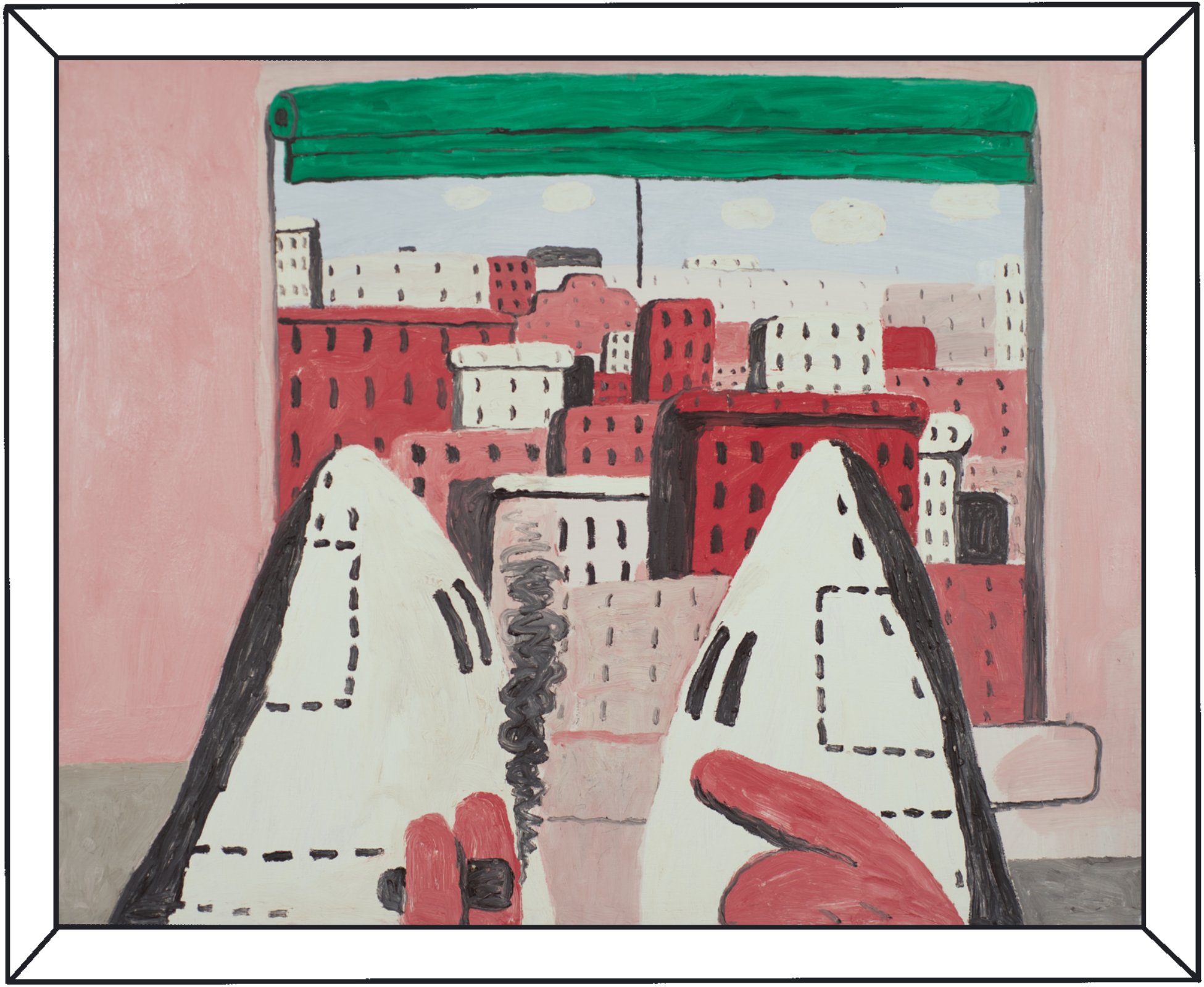


2020
White Guilt on Display, Instead of Philip Guston
Overpoliticking at four major art museums results in the postponement of retrospective.
By Amélie Pascutto
Philip Guston’s retrospective postponing controversy is yet another demonstration that museums are in crisis. And American ones are at the frontline of this crisis.
On Sept. 21, the Director of National Gallery of Art, Kaywin Feldman announced that after four years of planning, the major retrospective of American expressionist painter Philip Guston was to be postponed. The show was initially planned for this past summer and was already postponed for 2021 because of the pandemic. The decision was mutually agreed upon between the directors of the four institutions hosting the show – the National Gallery of Art in Washington (NGA), the Museum of Fine Arts in Boston, the Museum of Fine Arts in Houston, and the Tate Modern in London, where the retrospective was supposed to open before traveling to the States.

Philip Guston, Riding Around, 1969, oil on canvas. Courtesy of Hauser & Wirth.
The corpus of the exhibition is a selection of works from Guston’s figurative period in which he depicted cartoonesque characters hidden by large white hoods, reminiscent of the Ku Klux Klan. Although these figures do not directly represent KKK members but the evil that they embody, the directors feared a misinterpretation from the public after a summer of Black Lives Matter protests that they described as “the racial justice movement that started in the U.S. and radiated to countries around the world.”
Soon, the art world split on that decision, between those who saw it as cowardly and others defending the move. But the debate isn’t to determine whether or not Philip Guston was a white supremacist portraying racist scenes. Guston was from a Jewish family who fled the Soviet Union and actively engaged against racism during the 30’s; it has been clearly established that Guston was an anti-racist. The controversy, in this case, is about whether it is appropriate to show this kind of art in a time of social and political turmoil.
The controversy, in this case, is about whether it is politically appropriate to show this kind of art in a time of social and political turmoil.
In reaction to an article published in The Times, Tate director Maria Balshaw and Tate Modern director Frances Morris recognized that “the volatile climate in the U.S. over race equality and representation” was their main concern in delaying the show. This rare intervention from major museum directors — Feldman being the only one to respond to any public inquiries so far — says much more than it would appear to. It implies that European museums are not yet limited by political considerations but American ones are enmeshed with them. In fact, the only major news coming from the Tate regarding the Philip Guston retrospective has to do with the suspension of senior curator Mark Godfrey for expressing dissent, an in-house issue but certainly not one that takes comes from external politics.
Nowadays, every move and decision in American museums is influenced by politics. For the National Gallery of Art (NGA), this problem is all the more prevalent because out of the U.S. museums hosting Guston’s retrospective, it is the only institution directly associated with the federal government.
Since its inception in 1937, the NGA’s management has been a tight collaboration between private and government-appointed members in its board of trustees. In its Congressional Budget Request from 2020, as with every year, the NGA explains that its nine-member board of trustees which includes such people as Darren Walker, president of the Ford Foundation, is “comprised of five private members and four ex-officio members: The Chief Justice of the United States, the Secretary of State, the Secretary of the Treasury, and the Secretary of the Smithsonian Institution.” For the record, this means that John Roberts, conservative Supreme Court justice and highest-ranking person in the judiciary branch, is one of the trustees. This also means that Mike Pompeo and Steven Mnuchin, both individuals appointed by Trump and currently reporting to Trump, are — despite any background in art — trustees of the NGA.

Philip Guston, Open Window II, 1969, oil on panel. Courtesy of Hauser & Wirth.
Whether or not individual NGA staff support the Trump administration is personal, but the gallery itself (and certainly the personal stakes of some of its decision-making trustees) is bound to it. It is possible that with the election coming up, Feldman felt that having such subversive imagery in this public space could have serious political consequences.
It should be noted that this is just a hypothesis, because the reasons for the postponement are still unclear — the exhibition catalogue has already been published and the museum staff already reworked gallery walls over the summer. It’s also worth noting that though the exhibition was originally planned to open at the NGA first, the directors made a last-minute switch to have it open at the Tate during a summer of anti-racist protests that saw, for the first time, more Americans supporting BLM protests than Trump. This was a Herculean task; how is it possible to change the dates of such a big exhibition, given all the logistical issues? Still, none of the directors have admitted the political parameters of their decisions. The thing is, museums are places where the political happens even if they are not political entities. Regarded as symbols of white Western discourse at the expense of the long-oppressed, cultural institutions have been urged to change their practices in recent years. This decolonization process is, in fact, highly political.
Under the pressure of expectations from the public and, in this case, from politicians, museums are trying too quickly both to change their images and politically pander, even if it means abandoning their first mission — to present art to the public.
Too afraid that a predominantly white team would do something wrong for an exhibition denouncing white supremacy and racial oppression, directors of four major institutions decided to do nothing.
Too afraid that their handling of an exhibition denouncing white supremacy and racial oppression might lead to larger backlash (from either the public or the federal administration), the directors of four major institutions decided to do nothing yet. Without stating it in those words, the statement signed by the four directors decided to take on the face that they were undergoing a decolonization process, “bring[ing] in additional perspectives and voices” — meaning people of color, who are directly impacted by the issues addressed in Guston’s work — from scholars to the museums’ staffs (which, in contrast to curatorial and executive positions, is mainly composed of BIPOC).
In an interview with Artnet News, Feldman acknowledged that for an organization such as the NGA, which has “a meager track record [...] of showing and engaging artists of color,” it would have been more powerful if the first exhibition about racism was from a non-white artist perspective. Still, the museum’s (largely criticized) narrative about fearing public backlash and the racial discourse that would result seems counterintuitive when its postponing of the show has brought about the exact same type of public backlash and racial discourse. It’s not a move that makes sense. Except that in the museum’s budget request, we can see that Congress granted them $168,405,000 in 2019 and $173,225,000 in 2020. And suspiciously, nowhere has any of the directors mentioned why a white-centered show about racism (however anti-racist) was bad, or what it means for people of color (presumably those who would criticize this approach). Instead, Walker told the New York Times about “issues of incendiary and toxic racist imagery.”
Because of the nature of museums and their historical functions, traditional museums can hardly follow social changes as fast as other industries such as media. It is something that takes time. Centuries of imperialist thinking cannot be cured in one exhibition, whether it is happening now or in four years. The NGA likely understands this. What is protected by postponing the Philip Guston show? The museum, from the ire of a Trump administration that is hopefully in its last days. f
